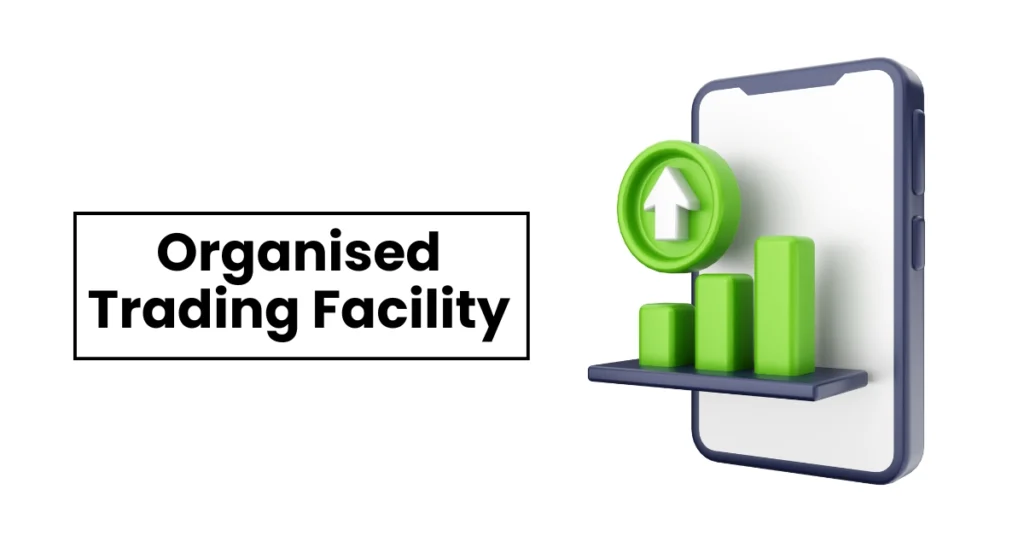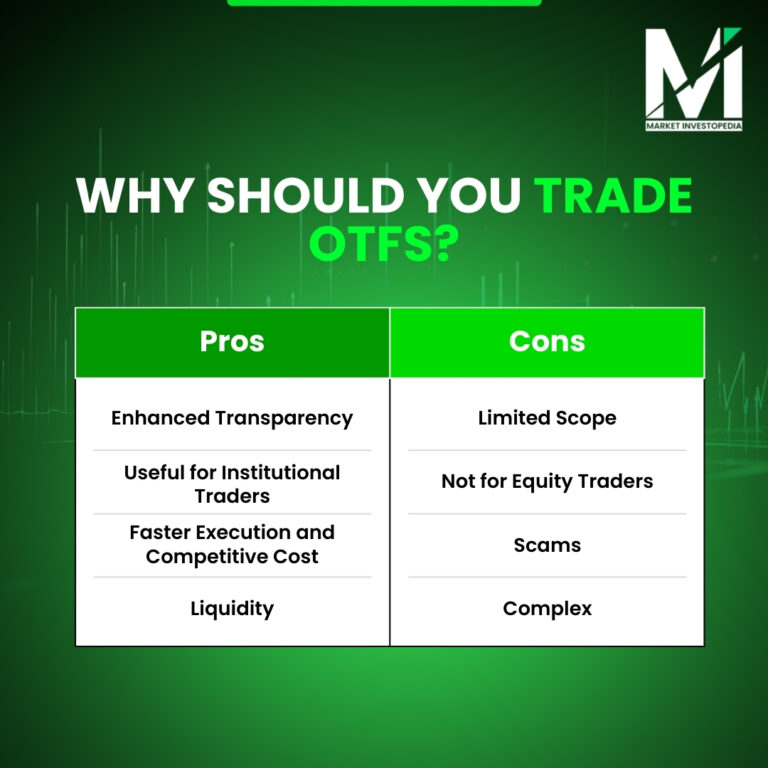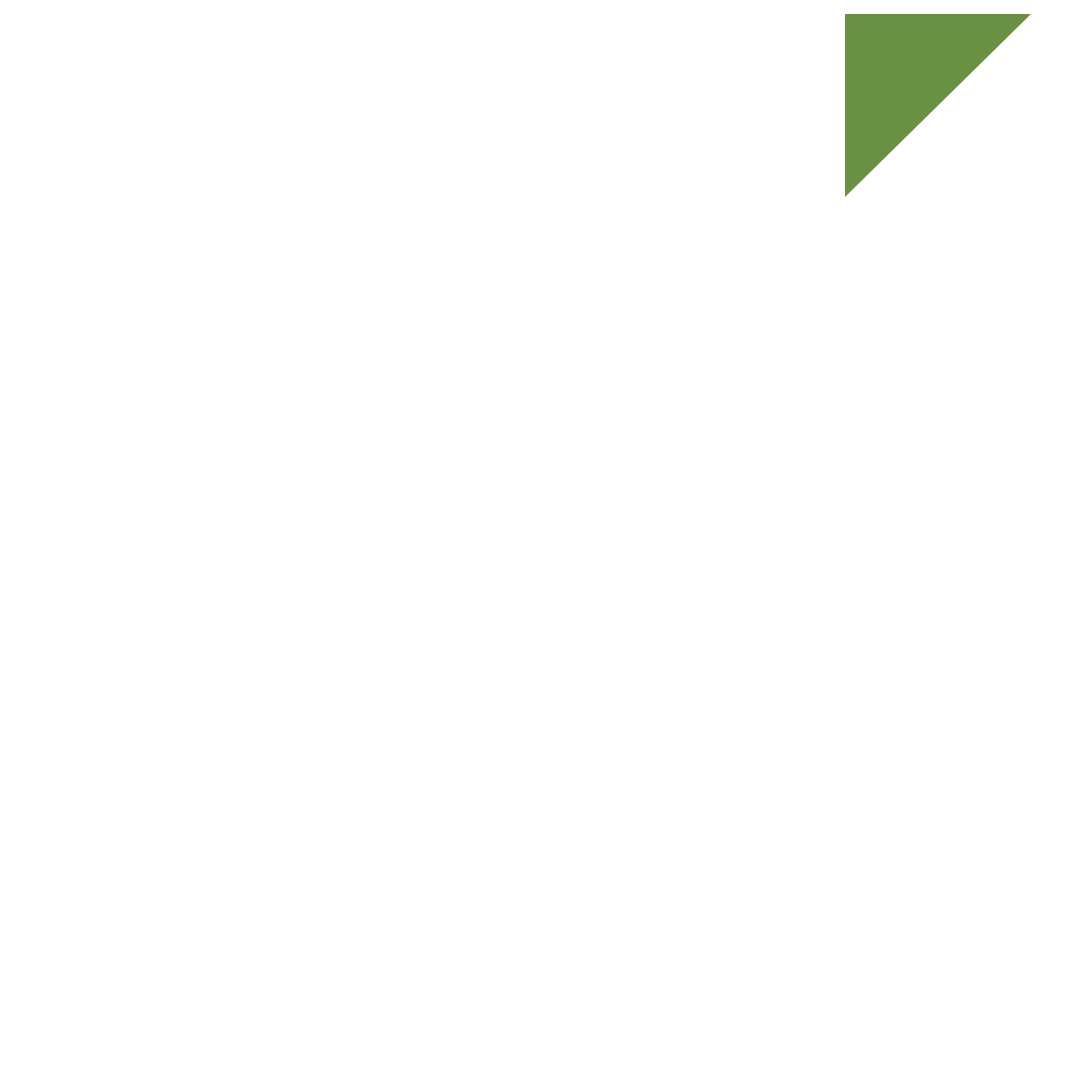Organised Trading Facility: All You Need To Know
An organized trading facility is a must-know term for European traders. It allows you to trade in a flexible environment with diverse assets, much like other multilateral trading facilities that operate across the continent.
However, not many traders know about it. In Market Investopedia, this series of learning diverse trading terminologies, we will have a detailed discussion on OTF. So, let’s get started with the organised trading facility definition.
What is an Organized Trading Facility?
The organized trading facility (also referred to as OTF in trading) is a modern multilateral trading facility through which traders buy or sell multiple financial assets in bond, commodities, and derivatives markets.

The OTF is regulated by the Markets in Financial Instruments Directive (MIFID II). MTF meaning refers to a “multilateral trading facility,” and while OTF is quite similar to an MTF multilateral trading facility, the only difference is that OTF is mainly for non-equity market trading. Also, OTF in trading offers a more favorable regulatory environment and flexible rules compared to many multi trading facility models.
OTF is based on discretionary trading. Basically, traders can choose how the orders are executed within the OTF framework. Overall, the methods give a transparent, flexible, and efficient framework for trading multiple assets, whether you compare OTF vs TTF or explore how to use an OTF to TTF converter.
A quick glance
The organized trading facility is a modern multilateral trading facility through which traders buy or sell multiple financial assets in bond, commodity, and derivatives markets.
A Multilateral trading facility is an alternative to a traditional stock exchange for trading multiple financial assets.
OTF and MTF are both European systems for trading in multiple financial assets. However, the only difference is that MTF offers equity trading and OTF does not.
Yes, OTF is a regulated trading system by MIFID II, a European financial Jurisdiction.
Bonds, Derivatives, Commodities, and all other non-equity products can be traded on OTF.
Why Should You Trade OTFs?
In the present scenario, there are an endless number of ways to trade in financial assets. So let’s understand what makes the organized trading facility a must-try system:
Enhanced Transparency
The OTF comes under MIFID II, a reputable financial organization in the European region. Also, traders or investors enter into an electronic contract to buy or sell a financial asset. The market provides price transparency and a secure environment.
Useful for Institutional Traders
Traders who trade in large amounts can benefit from an organised trading facility. The flexibility for regulatory connections and discretion trading is beneficial for big market players, especially when compared to other swap facility setups.
Faster Execution and Competitive Cost
Under OTF, all the activities take place electronically. So traders can experience fast order execution without delays. Additionally, the trading cost is quite low, with a tight bid-ask price difference.
Liquidity
The OTF market is quite popular in European regions. So when trading bonds, commodities, and derivatives, traders can get high liquidity. It enables traders to open and close trades at their desired price, similar to how TTF or OTF trading pairs offer flexibility in certain markets.

Limitations of OTFs
Limited Scope
OTF is especially for European traders, so traders living in other regions cannot trade in the market. However, some countries have similar trade options. For example, in the US, an Alternative Trading System (ATS) by the SEC is popular.
Not for Equity Traders
OTF is only for trading non-equity financial instruments such as bonds, commodities, and forex derivatives. However, traders dealing in shares and the ETF market cannot use this system.
Complex
The OTF system is quite complex to understand for a beginner. Also, small or passive traders prefer CFD trading over the OTF system for trading diverse products.
What Is the Difference Between an MTF and an OTF?
Multilateral trading facilities (popularly known as MTFs) and the OTF are popular European systems to trade in multiple financial assets. Thus, confusing them with each other is common. Here is a guide that helps you identify the key differences between OTF and MTF.
Basis of Difference | OTF | MTF |
Meaning | The organized trading facility system for buying or selling multiple financial assets in bond, commodities, and derivatives markets. | A Multilateral trading facility is an alternative to a traditional stock exchange. Trade can trade multiple financial assets with such a facility. |
Financial Instruments | OTF is for non-equity products trading, such as bonds, forex, or commodity derivatives. | MTF is for trading diverse assets, including equity, stocks, bonds, and derivatives. |
Scope | OTF is a type of MTF; thus, its scope is narrow. | MTF has a much wider scope than the OTF. |
Regulations | OTF is introduced and managed under MIFID II. | MTF is regulated under MIFID I and MIFID II. |
Flexibility | OTF offers fewer trading restrictions and flexible rules and regulations. | MTF, being a traditional way of trading, is less flexible and more strict. |
Discretion Trading | OTF offers discretion trading, allowing brokers to match orders. | MTF trading is non-discretionary. |
Traders sometimes compare TTF vs OTF, but the OTF to TTF shift mainly applies when moving between specific electronic trading platforms. In such cases, knowing whether to choose TTF or OTF depends on your market focus.
Wrapping Up
OTF is an excellent way to trade in non-equity instruments for European traders. It has many advantages, including low cost, fast execution, and discretion trading. In addition, traders or investors can trade in transparent and well-regulated market conditions. You just need to get a proper understanding of the European system to get started.
There are many ways to trade in financial assets in different countries—whether through OTF in trading, multi trading facility setups, or exploring the OTF and MTF differences. Explore Market Investopedia’s educational resources or attend our insightful webinars to decide which path fits your trading goals best.

